#tibetan shrine room
Explore tagged Tumblr posts
Text
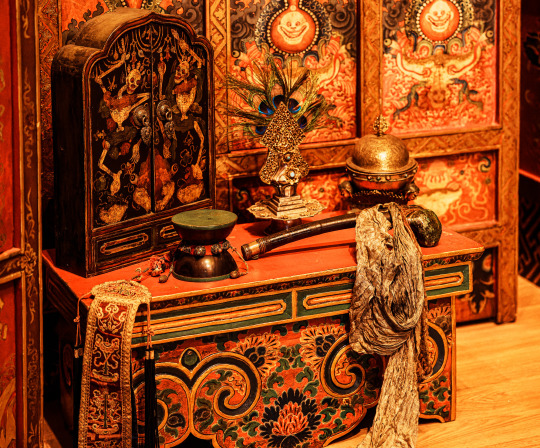
photo: David Castenson
#bhuddism#funerary objects#tibetan shrine room#national museum of asian art#photographers on tumblr#thigh bone trumpet#skull cup
105 notes
·
View notes
Text
a friend of a friend is organizing a petition to reclaim stolen Himalayan art from museums:
To our allies, scholars of Tibet, and those who support Tibetans: We call on you to stand with us.
WE CALL FOR THE RUBIN MUSEUM TO:
Invest money into living Tibetan and Himalayan artists and communities, who often struggle to make livings from their work.
Give objects back. Enter a genuine repatriation process with Tibetan and Himalayan communities. Return The Shrine Room to community spaces stewarded by Tibetan and Himalayan peoples such as monasteries, regional associations, and arts institutes.
Words of support in the form of voice recordings/notes also accepted if preferred. Please email your recordings at [email protected]
please sign and share!
38 notes
·
View notes
Text
Escaflowne's energist (the one it holds onto, not the drag-energist) has 8 sides.
the 8 petal lotus motif shows up multiple times in Fanelia in murals and their mandala during the coronation ceremony.
the 8 petal lotus is representative of what's called the "womb realm" in buddhism: the Womb Realm holds the 5 Buddhas of compassion, represents the "repository of truth," and is considered the source of all compassion.
the 8 petal lotus symbolises the state of total mental purity and spiritual perfection, and the pacification of our nature. the 8 petals correspond to the Noble Eightfold Path of the Good Law. the lotus is found at the heart of the Garbhadhatu Mandala— which is the name of the womb realm.
Folken appears at the end so that he can relieve Hitomi of ignorance and uncertainty, and she in turn does this for Van. This— specifically abolishing ignorance— is part of the noble Eightfold path in Buddhism in order to free oneself from samsara (the painful cycle of rebirth) and achieve enlightenment.
Right View: our actions have consequences, death is not the end, and our actions and beliefs have consequences after death. Later, right view came to explicitly include karma and rebirth, and the importance of insight
Right Resolve: also known as "right thought", "right aspiration", or "right motivation". The practitioner resolves to strive toward non-violence and avoid violent and hateful conduct.
Right Speech: no lying, no abusive speech, no divisive speech, no idle chatter.
Right Conduct or Action: no killing or injuring, no taking what is not given, no sexual misconduct, no material desires.
Right Livelihood: no trading in weapons, living beings, meat, liquor, or poisons.
Right Effort: preventing the arising of unwholesome states, and generating wholesome states, the bojjhaṅgā (the 7 factors of awakening, which are mindfulness, investigation, energy, joy/rapture, relaxation/tranquility, concentration, equanimity.)
Right Mindfulness: a quality that guards or watches over the mind; the stronger it becomes, the weaker unwholesome states of mind become, weakening their power "to take over and dominate thought, word and deed." Never be absent minded, being conscious of what one is doing; this encourages the awareness of the impermanence of body, feeling and mind.
Right samadhi: practicing four stages of dhyāna (meditation), which includes samadhi proper in the second stage, and reinforces the development of the bojjhaṅgā, culminating into upekkhā (equanimity) and mindfulness. In the Theravada tradition and the vipassana movement, this is interpreted as concentration or one-pointedness of the mind, and supplemented with vipassana meditation, which aims at insight.
it's interesting then that Fanelia's war rooms are Japanese in style vs the Nepal/Tibetan/Bhutanese environment, and Escaflowne (the war machine) is held within a shrine which incorporates the motifs above. On first pass, it seems like the relatively modern (sengoku/post-heian) themes have since overriden what should be the core beliefs to steward Fanelia, beliefs which Folken and Van subscribe to!, but which have been shaken and suppressed by their environment.
3 notes
·
View notes
Text
Explore the Unseen Side of Dharamshala Beyond McLeod Ganj
When people hear the name Dharamshala, McLeod Ganj is often the first thing that comes to mind. Yet, McLeod Ganj is only a small part of Dharamshala, known for its trendy cafes and the famous Triund trek. But there’s so much more to explore in Dharamshala beyond the well-trodden tourist spots.
If you're looking for unique experiences away from the crowded cafes, the following is an insider's guide to some of the lesser-known attractions and activities in this beautiful region. Read further to know more:
Discover the Art of Momo Making

If you’re looking to immerse yourself in local cuisine, mastering the art of cooking momos is a must. At a private kitchen run by Rita Kapoor, an experienced North Indian cook, you'll learn how to prepare this delicious dish.
The cooking classes are intimate, with a maximum of 8 participants, ensuring a hands-on experience. These three-hour sessions are perfect for food enthusiasts wanting an authentic taste of local dishes, with clear, easy-to-follow instructions.
Location: Old German Bakery, 1st floor, Room #2, Opposite Buddha Hall, Bhagsunag, Dharamshala
Explore the Library of Tibetan Works and Archives

For those with a love for books, the Library of Tibetan Works and Archives is a hidden gem. Tucked away in a peaceful Tibetan settlement, this library houses rare and old books focusing on Tibetan and Buddhist philosophy. The space also includes a museum displaying important Tibetan artefacts, making it a must-visit for art and history lovers.
Location: Gangchen Kyishong, Dharamshala
Free Meditation at Tushita Meditation Centre

If you want to experience inner peace amidst the serene surroundings of Dharamshala, the Tushita Meditation Centre offers free, guided meditation sessions every day except Sundays. From 9:30 to 10:30 am, you can relax, clear your mind, and enjoy the beautiful hill views. The centre also has a library where you can rent books related to meditation and mindfulness.
Location: McLeod Ganj, Dharamshala
Dive into the History of Kangra District at the State Art Museum

For a cultural deep dive, the Museum of Kangra Art offers a curated collection of local art, artefacts, and historical items. The museum's collection includes sculptures, manuscripts, carved wooden items, and jewellery. You can even purchase artworks by local artists. It’s a compact but impressive destination for anyone keen on history and art.
Location: MDR45, Sudher, Dharamshala Note: The museum is closed on Mondays.
Learn Indian Music at Divine Indian Music Center

Music lovers can enhance their trip by learning how to play traditional Indian instruments at the Divine Indian Music Center. Whether you're interested in learning the flute, tabla, sitar, or harmonium, this centre offers lessons for all skill levels. The teachers, Nidhi and Hari, are well-known for their kindness and dedication to teaching music in a welcoming atmosphere.
Location: Upper Bhagsu, Next to Gypsi King Guest House, Dharamshala
Visit the Gyuto Tantric Monastery Temple

Located on the outskirts of Dharamshala, the Gyuto Tantric Monastery is a stunning example of Tibetan architecture. Perched atop a hill and offering panoramic views of the Dhauladhar mountains, this monastery provides insight into monastic life and Tantric practices. The 40-50 steps leading to the shrine add to the adventure of the visit.
Location: Sidhbari, Dharamshala
Retreat at Thosamling Nunnery and Institute

For a truly tranquil experience, a stay at the Thosamling Nunnery is ideal for solo travellers seeking peace and reflection. Surrounded by lush gardens, prayer flags, and bamboo trees, this serene sanctuary offers a welcoming atmosphere. A fortnightly weekend meditation course is held here, providing the perfect opportunity for deep relaxation.
Location: Sidhpur, Dharamshala
Explore India using Tourist eVisa
Before planning a trip to visit Dharamshala, you need an Indian visa that helps you to enter India. You can directly apply for a tourist visa with the validity of 30 days, 1 year and 5 years. For an e tourist e-visa, you need to know what documents are needed and how to apply for this e visa online.
To apply for tourist visa to India, the process begins online through the official eVisa portal. Applicants must fill out the online application form, upload a recent passport-size photograph, and a scanned copy of the passport's bio page. Additional documents, such as proof of travel, may be required depending on the applicant's nationality.
After submitting the form and paying the applicable visa fees via credit or debit card, processing typically takes 3-5 business days. Once approved, the eVisa is sent via email, which must be printed and carried during travel. Visitors must enter India through designated airports or sea ports, and their biometric details will be collected upon arrival.
Why choose us?
Choose us because we are dedicated to curating exceptional travel experiences in Dharamshala. Whether you want to explore Tibetan culture, enjoy peaceful retreats, or learn something new, we would love to help you discover the hidden gems that make Dharamshala special.
#evisaforindia#indiaevisa#travel#indianvisaapplication#evisaindia#evisaindiacost#mcleodganjinhimachalpradesh#mcleodganj#dharamshalatourplaces#mcleodganjdharamshala#placesnearmcleodganj#mcleodganjtouristplaces#placestoseeinmcleodganj
0 notes
Text
The Potala Palace - Tibet
The Potala Palace, the former residence of many Dalai Lamas
The Potala Palace is a UNESCO World Heritage site that once served as the primary residence of the Dalai Lamas until the 14th Dalai Lama. Nestled in the heart of Lhasa, the capital of the Tibet Autonomous Region, China, this remarkable palace derives its name from Mount Potala, believed to be the mythical abode of bodhisattva Chenresi (Avalokitesvara). For generations, the Potala Palace played a central role in Tibetan Buddhism, housing numerous Dalai Lamas. This awe-inspiring structure rises 300 meters above the Lhasa Valley, perched atop Marpo Ri hill, making it one of Tibet's most monumental landmarks. Stretching approximately 400 meters east to west and 350 meters north to south, the palace features a 3-meter-thick base and a copper foundation to guard against earthquakes. Comprising thirteen stories, it boasts over 1,000 rooms, 20,000 statues (including several significant Buddha statues), and 10,000 shrines. Read more at:
The Potala Palace, the former residence of many Dalai Lamas


1 note
·
View note
Text
Explore Dehradun: Top Tourist Places and Luxury Stays
Dehradun, the capital city of uttarakhand luxury resorts , is a treasure trove of natural beauty, historical landmarks, and serene retreats. It is an ideal destination for families, couples, and solo travelers looking to explore the rich culture and stunning landscapes of northern India. Enhance your Dehradun experience by staying at some of the best luxury resorts in the region. Here’s a guide to the top tourist places in Dehradun and where to stay.
Top Tourist Places in Dehradun
Robber's Cave (Guchhupani)
Description: A natural cave formation with a river running through it, perfect for picnics and exploring.
Highlights: Enjoy wading through the cold stream, exploring the narrow gorge, and the waterfall at the end of the cave.
Sahastradhara
Description: Known for its thousand-fold spring, this area is famous for its therapeutic sulphur water springs.
Highlights: Bath in the mineral-rich water, enjoy the picturesque views, and visit the nearby caves.
Malsi Deer Park
Description: A zoological garden located at the base of the Shivalik range, ideal for a family outing.
Highlights: Spot deer, peacocks, and a variety of birds, and enjoy the lush greenery and picnic areas.
Forest Research Institute (FRI)
Description: An iconic institution known for its Greco-Roman architecture and extensive research in forestry.
Highlights: Explore the museum showcasing different aspects of forestry, take a walk through the beautiful campus, and admire the grand architecture.
Tapkeshwar Temple
Description: A popular cave temple dedicated to Lord Shiva, located on the banks of the Asan River.
Highlights: Witness the naturally dripping water over the Shiva Lingam, and explore the serene surroundings and nearby sulphur springs.
Mindrolling Monastery
Description: One of the largest Buddhist centers in India, established in 1965 by the Tibetan community in exile.
Highlights: Admire the 60-meter tall statue of Buddha, visit the beautifully decorated shrine rooms, and enjoy the peaceful ambiance of the gardens.
Clock Tower
Description: A historical landmark and one of Dehradun's most recognizable structures.
Highlights: Visit the six-faced clock tower, explore the surrounding markets, and experience the hustle and bustle of the city center.
Lacchiwalla
Description: A popular picnic spot with lush greenery, man-made lakes, and walking trails.
Highlights: Enjoy boating, take a dip in the shallow streams, and relax amidst the natural beauty.
Tapovan
Description: A spiritual and peaceful place, known for its ashrams and scenic views.
Highlights: Engage in meditation and yoga, walk along the tranquil pathways, and visit the Tapovan Temple.
Kempty Falls (near Dehradun)
Description: Located a short drive from Dehradun, this stunning waterfall is a major attraction for tourists.
Highlights: Take a refreshing bath under the falls, enjoy the surrounding greenery, and have a picnic by the water.
Where to Stay
Crestmont Ataraxia Dehradun Resort
Location: Dehradun
Crestmont Ataraxia Dehradun Resort is a luxurious retreat set amidst the tranquil landscapes of Dehradun. It offers a perfect blend of modern amenities and natural beauty, making it an ideal choice for travelers seeking comfort and relaxation.
0 notes
Photo
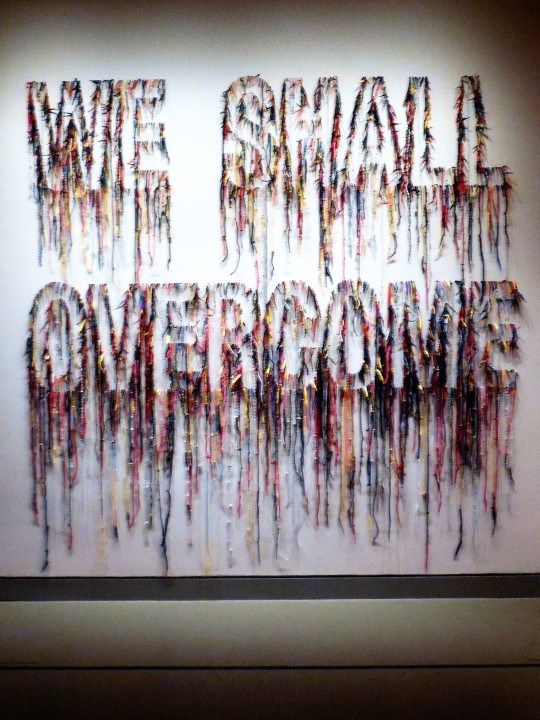
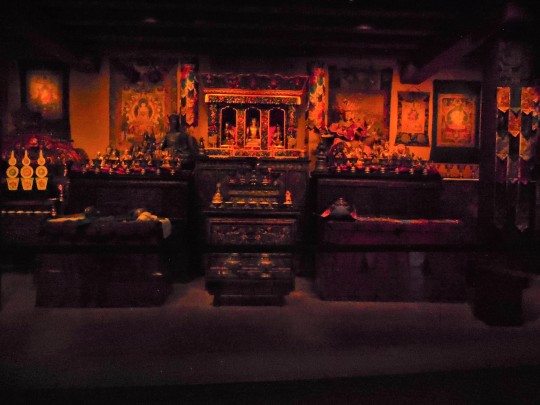
“Deep in my heart, I do believe/We shall overcome...” Nari Ward’s “Shoelace Art” was at the Rubin Museum, in Chelsea. Although this artwork pays homage to the civil rights marches, the museum is mostly dedicated to the Himalayan region. The Rubin is a favorite of mine. I especially appreciate their Tibetan Buddhist Shrine Room. The healing sights and sounds of this peaceful oasis can now be experienced on You Tube. “2 hours of chanting in a Tibetan Buddhist Shrine Room for meditation and concentration...” (Photo of “Shoelace Art” taken on October 18, 2019) (Photo of the Tibetan Buddhist Shrine Room taken on January 31, 2020)
#rubin museum of art#nari ward shoelace art#we shall overcome#tibetan buddhist shrine room#nyc museum#nyc photos
5 notes
·
View notes
Text

The Sakya Monastary holiday sale is Sunday, December 2, and worth checking out if you are into Tibetan crafts and artifacts.
At noon is one of the rare tours of the Shrine Room. This is the one of the only times that non-Temple members can see this space. This room is where the floor repair was courtesy of Bernardo Bertolucci and the film crew for Little Buddha. They filmed in the Shrine Room for that movie, while it was being built into what you see today.
1 note
·
View note
Video
Atmosphere of a Tibetan monastery .... Tharlam Monastery shrine room at break, light filtered by incense, with western Tibetan Buddhist student from South Africa reading, Bodhisattva Vows day, Sakya Lamdre, Boudhanath, Kathmandu, Nepal by Wonderlane
#Nepal#Lam Dre#3421#Tharlam Monastery#shrine room#break#western#Tibetan Buddhist#student#reading#Bodhisattva Vows#Bodhanath#Kathmandu#flowers#sun#incense#smoke#Tibetan#Buddhist#light#filtered#Tharlam#Monastery#shrine#room#images of the world#Boudha#religious#religion#spiritual
2 notes
·
View notes
Photo
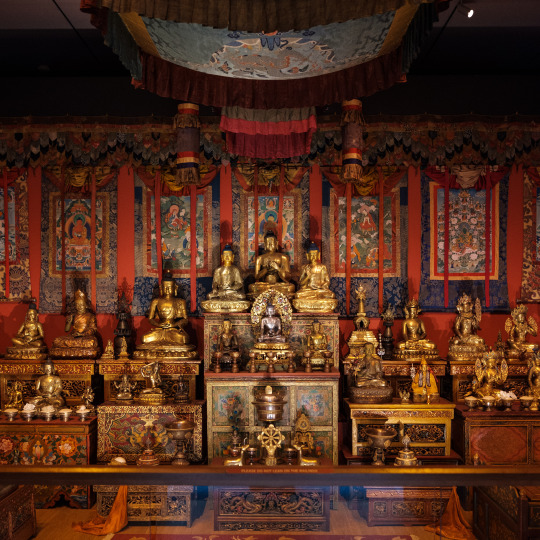
The Tibetan Buddhist Shrine Room
5 notes
·
View notes
Text
anyone else’s airbnb have a tibetan buddist shrine and a portrait with blood dripping down in the same room or nah
#this is the room im staying in#giving the bloody portrait a little goodnight kiss as we speak#there is also an imitation stone slab of part of the quran#just hanging there#im getting so many mixed messages#there is a gong in my window and if i peek out of the door i can see egyptian hieroglyphs#is this the twilight zone idk ive never seen it so i can’t say#osapost#shitpost
3 notes
·
View notes
Text
Thangtong Gyalpo: Mahasiddha and Builder of Bridges
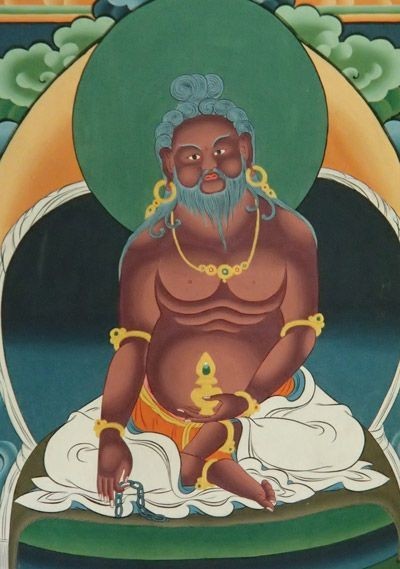
Thangtong Gyalpo: Mahasiddha and Builder of Bridges
“Visualize in front of you a vajra made of meteoric iron. At its center is Thangtong Gyalpo, 900 years old, very beautiful, with red rosy cheeks, dark red, healthy, with a big belly and muscles. But to symbolize the nonduality of youth and age he should have white hair, mustache and beard, a long white beard. He is the one who built Tibet’s bridges and also created the Tibetan operas that we know.”
— Dzongsar Khyentse Rinpoche
The 14th-century mahasiddha Thangtong Gyalpo was a busy man. His status in Tibetan and Bhutanese culture is unparalleled: He was a master of the highest Vajrayana teachings, in addition to displaying unparalleled skill as an architect, blacksmith, civil engineer, artist, writer of operas, and dispeller of epidemics. He is both a legend and a historical figure. Some records say that he was born in 1385 and instantly attained the age of 60 years. Most sources agree that he died when he was 125, having perfected secrets of longevity that practitioners can attain through supplication and prayer.
Rinpoche said in a recent teaching that Thangtong Gyalpo lived to be 900 years old, “but this 900 years old is very relative. Thangtong Gyalpo, depicted as an old man, with a white beard, nice white hair, really big, muscle-y, not frail — all of this has tendrel. Being a healthy old man brings the meaning of long life. The white beard means wise. So by visualizing, praying, and supplicating, it creates this tendrel for the practitioner to receive this blessing of longevity.”
Born in Ölpa Lhartse in upper Tsang, Tibet, the historical figure Thangtong was a unique mahasiddha both because of his tremendous realization and his engineering accomplishments. He established incredible engineering marvels under challenging circumstances and over difficult terrain. Imagine a larger-than-life man like John Henry (an American legend who made railway tunnels through mountains with his hammer and huge forearms faster than steam-powered machines) combined with the wisdom of Padmasambhava, sitting astride a horse that he’d ride into shrine rooms. He became known as “the madman of the empty land.” In some Tibetan texts, he is reported to have been seen feasting just as easily on a long-dead and rotting horse as on delicacies.
It was because of his madman looks that one ferryman refused him passage across water to a holy site, and from this experience Thangtong Gyalpo had a vision of iron-chain suspension bridges that any pilgrim could cross. To build such a bridge, he would need to learn metallurgy to create durable links, study engineering to span unpredictable rivers and deep gorges, and raise funds to buy the iron ore and pay for labor.
Thangtong Gyalpo developed a method of smelting iron to create enormous chain links that remain untarnished to this day. Many of the 58 suspension bridges that he built are still in use in Bhutan and Tibet. He opened the route through the land of Kongpo aborigines, where he obtained iron for his bridges and rights of passage for Tibetan pilgrims to visit the holy places in Tsari to the southeast of Dakpo, near the Indian border. Many practitioners pray to him when they are seeking strength and connections. He also designed and built many large and unusual stupas across Tibet and Bhutan, including the great Kumbum Chörten at Chung Riwoche, and established Gongchen, a Sakya monastery in Derge.
It is said that Thangtong Gyalpo used his skills as a performing artist to raise money for his projects. He established Tibet’s first dharma theater troupe, which performed operas, recited mantras, and told stories that were meant to subdue demons and teach sentient beings . Today, Bu chen (“Great Sons”) performers in Tibet consider Thangtong Gyalpo the founder of Tibetan opera. They often perform a sword dance that ends with breaking a stone to reenact Thangtong Gyalpo’s triumph over an epidemic-causing demon. After flying to Lhasa on a white-tailed eagle, he trapped the demon inside a stone that he carried into the marketplace and split open with a rock shaped like a ritual dagger.
Thangtong Gyalpo’s ability to eradicate sickness is also part of his legend. His prayers are considered to be effective against myriad adverse circumstances. Dzigar Kongtrul Rinpoche writes that Thangtong Gyalpo’s Refuge Prayer is one of the most powerful. “The Outer, Inner, and Secret Refuge Practice of the Mahasiddha Thangtong Gyalpo prayer is very helpful. I do it all the time, day and night, whenever there’s a need. It was given directly to Thangtong Gyalpo’s teacher by Avalokiteshvara himself for Thangtong Gyalpo to spread… I’ve given it to a few people to do, to transform their life circumstances and different difficulties and patterns, and it seems like it really has worked wonderfull
15 notes
·
View notes
Video
youtube
Art in Practice: Encountering the Buddha with the Philip Glass Ensemble
Smithsonian's National Museum of Asian Art Immerse yourself in the hypnotic music of composer Philip Glass while exploring artworks from the exhibition Encountering the Buddha: Art and Practice Across Asia at the Smithsonian’s National Museum of Asian Art. With Glass’s mesmerizing music as the soundtrack, the film takes a contemplative look at Buddhist sculptures and paintings as well as the complete Tibetan shrine room at the heart of the exhibition. In an interview made for this film, Glass explores the many ways his music has been inspired by Buddhism and Tibetan culture. The Philip Glass Ensemble performs excerpts from several of his signature works, all filmed recently in New York for this project.
5 notes
·
View notes

